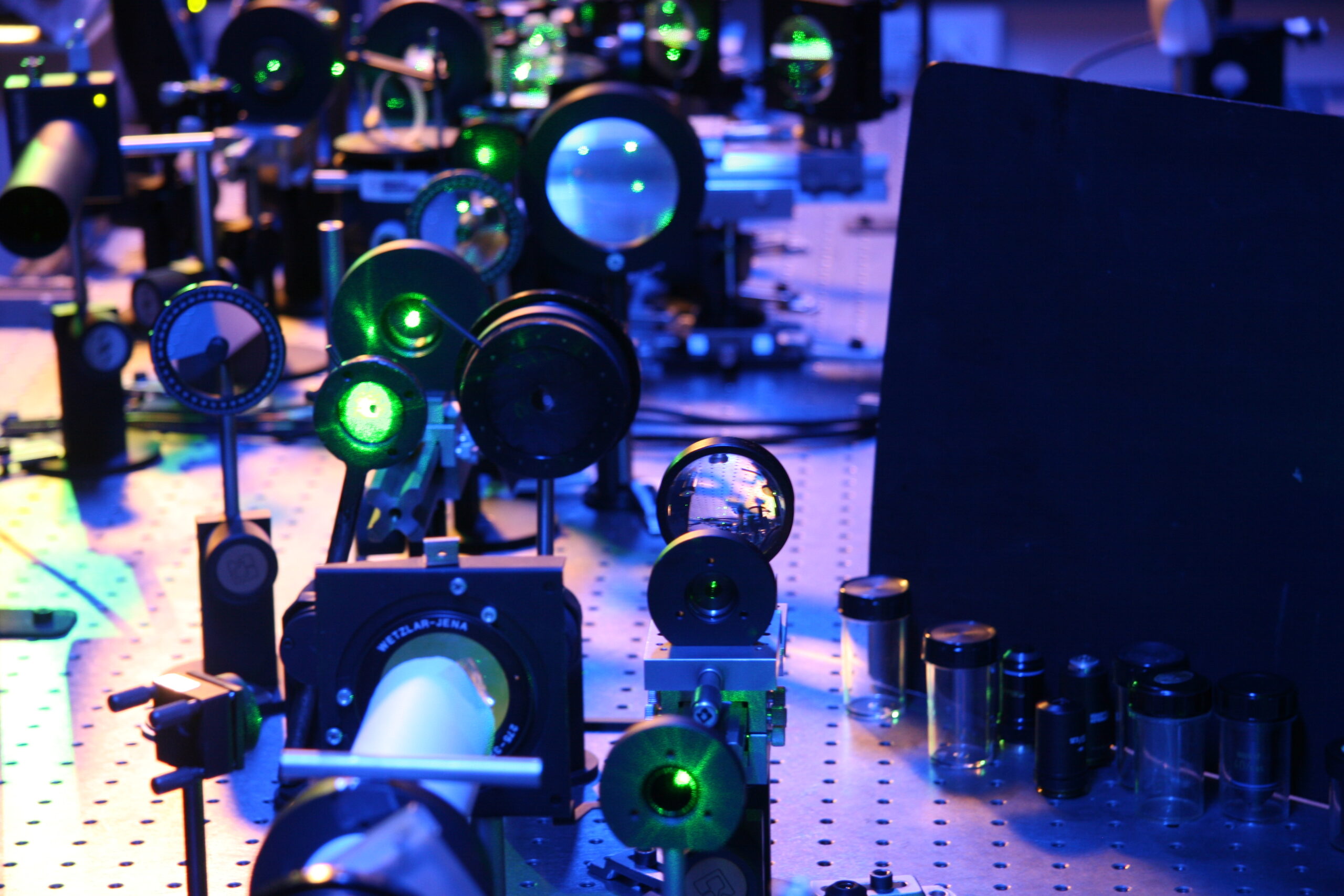Several modes of emission spontaneously synchronise.
Marc Sciamanna, professor at CentraleSupélec, director of the Chair in Photonics and of Institut Photonique, and deputy director of the LMOPS laboratory comments: “The coexistence of a partial synchronisation of coupled oscillators within a larger group of unsynchronised oscillators has been named “chimera” by complex systems specialists and is now revealed for the first time through a laser emission. This property allows to improve the performance of lasers and offers a new perspective on the spontaneous manifestation of order inside complex systems.”
Synchronisation (or rhythm adjustment between several coupled oscillators) is a fundamental property of complex systems. It has been studied since the 17th century through the experiment of coupled pendulums by Huygens for instance. Its daily life examples are numerous: synchronisation of the biological rhythm with day-night alternation, applause in a concert venue or neurons in our brain.
A laser is a natural example of a coupled oscillators system. In fact, an important quantity of “modes”, each corresponding to optical oscillations at different frequencies, coexist in the optical cavity of the light source which is exploited with optical fibre. However, although coupled, these modes are not naturally synchronised, consequently, the laser emission resulting from the interaction of these modes is usually disordered in space and in time.
The ongoing work projects by the Chair in Photonics demonstrate that some “modes” synchronise spontaneously, manifesting in the laser emission an ordered dynamic which coexists with the disorder stemming from other non-synchronised laser modes.
This discovery implies numerous consequences. The partial synchronisation of laser modes allows to consider the control of spatial and temporal instabilities due to the interaction of a large number of laser modes, which limits the performances of lasers in high power industrial applications. A better understanding of the functioning of lasers is also crucial for modern laser applications in broadband telecommunications and high-resolution imaging. Finally, studying and controlling the disordered and unstable laser emission leads to developing new optics-based cryptography solutions that will enable to secure the exchanged information onto an optical fibre.


